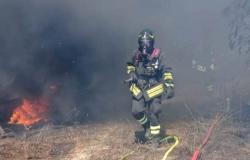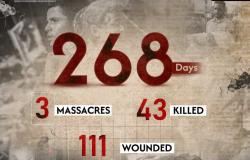by Fiorella Franchini
“They say that the truth always triumphs, but this is not the truth.” argued Anton Chekhov. Objectivity languishes in the face of the sudden and suspicious death of Diana Spencer and Dodi al Fayed on 31 August 1997 under the Alma tunnel in Paris. 27 years later, the official version of the accident which incriminates the drunk driver and the photographers who were chasing the car continues to conflict with journalistic investigations which call it into question.
Annalisa Angelone retraces the story in “Diana Spencer – Death, myth and mysteries”, Polidoro editore, systematically analyzing the personality of the princess, the facts, the documentation, the anomalies. A scrupulous analysis based on countless controlled and reliable sources that exclude any insinuation of sensationalist conspiracy. It is the first and only Italian investigative book that examines Diana’s last hours and, as in a classic crime story, the author develops the motives, the personal context, the crime scene and the suspects.
There were many reasons for eliminating the princess, connected to private life and even more so to public life. Diana Spencer and her husband Charles of England, although divorced, never stopped filling the tabloid newspapers. Charles continued his relationship with Camilla, the woman he had always loved who he would never have been able to marry, even following the divorce, as the Archbishop of Canterbury had made clear. Diana had a stable relationship with a wealthy Egyptian son of Mohamed al Fayed, a controversial businessman, and it seems that she was pregnant and about to remarry. Her immense popularity highlighted her ex-husband’s lack of charisma, and her unconventional behavior was a source of embarrassment to the English Court.
In her role the princess he worked tirelessly to raise public awareness on issues such as AIDS, leprosy and drug detoxification. She visited hospitals and orphanages around the world, bringing comfort and hope. His commitment against the use of anti-personnel mines in Angola was decisive and convinced American President Clinton to ban them. Diana had announced who would have named those responsible but the dossier he was working on was never found again. The British war industry was one of the largest in the world, second only to that of the United States; therefore there were many interests threatened by his intervention and there was no lack of intimidation. New battles are also planned, perhaps among the refugee camps of Gaza.
Annalisa Angelone analyzes in detail the inconsistencies found in the investigation papers. The issues related to the tests conducted on the driver’s blood, in particular, the very high levels of carbon monoxide, the reliability of the alcohol test carried out by the French. The death and secrets of paparazzo James Andanson, his real presence at the scene of the accident, his false testimonies, his high standard of living remain an unknown. How to interpret the background, little known to the general public, of the sensational reversal of the jury in the English trial, which in 2008 considered it inaccurate to state that the accident had been caused by Henri Paul and the “paparazzi” and replaced this term with the expression of “following vehicles”. Furthermore, in that area of Paris, that night the cameras strangely did not work, the car windows were not tinted and no public order provisions were made for the presence in the city of a glamorous figure like the Princess of Wales. There are many gaps, negligence, omissions, refusals of collaboration, silences, partial admissions. Lost or hidden truths?
A pressing and detailed narrative, from an investigative journalist, which gives no answers and generates further doubts. A reflection that brings out disconcerting scenarios within our Western democracies, makes us question the power of economic and political lobbies, the boundaries of legality and freedom, and the need to preserve the critical spirit.
From the pages emerges with refinement the image of the sweet and independent, sad and ironic woman who merges with that of the determined, concrete public figure, rich in humanity and social commitment. The myth of Lady D has, perhaps, less sacredness than an ancient fairy tale but it possesses the same exceptionality, the same exemplary charge. Like the heroes of the past the story of the people’s princess is destined to remain in the collective imagination, to be remembered forever, sealed by the melancholy for a broken life and by mystery, a symbol of altruism and courage, a key to understanding this time and this society.







